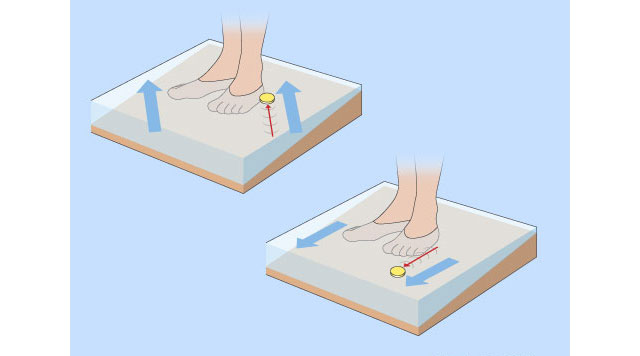Longshore Drift is the movement of sand along a beach every time a wave breaks at an angle. As the diagram shows, most waves (except in sheltered bays) break at an angle to the shore. They are driven onshore by the winds. When a wave breaks, the surf (swash) rushes up the beach, carrying sand with it. Then it comes to a stop and begins to flow back. Now the main force is gravity, which pulls it straight back down the beach. So it goes up at an angle and back straight. At the end of one wave the sand has moved sideways along the beach.
This happens all the time, but it is difficult to see. The video shows it. The way most people notice longshore drift is when the sand piles up against a beach fence (also called groyne or breakwater).




